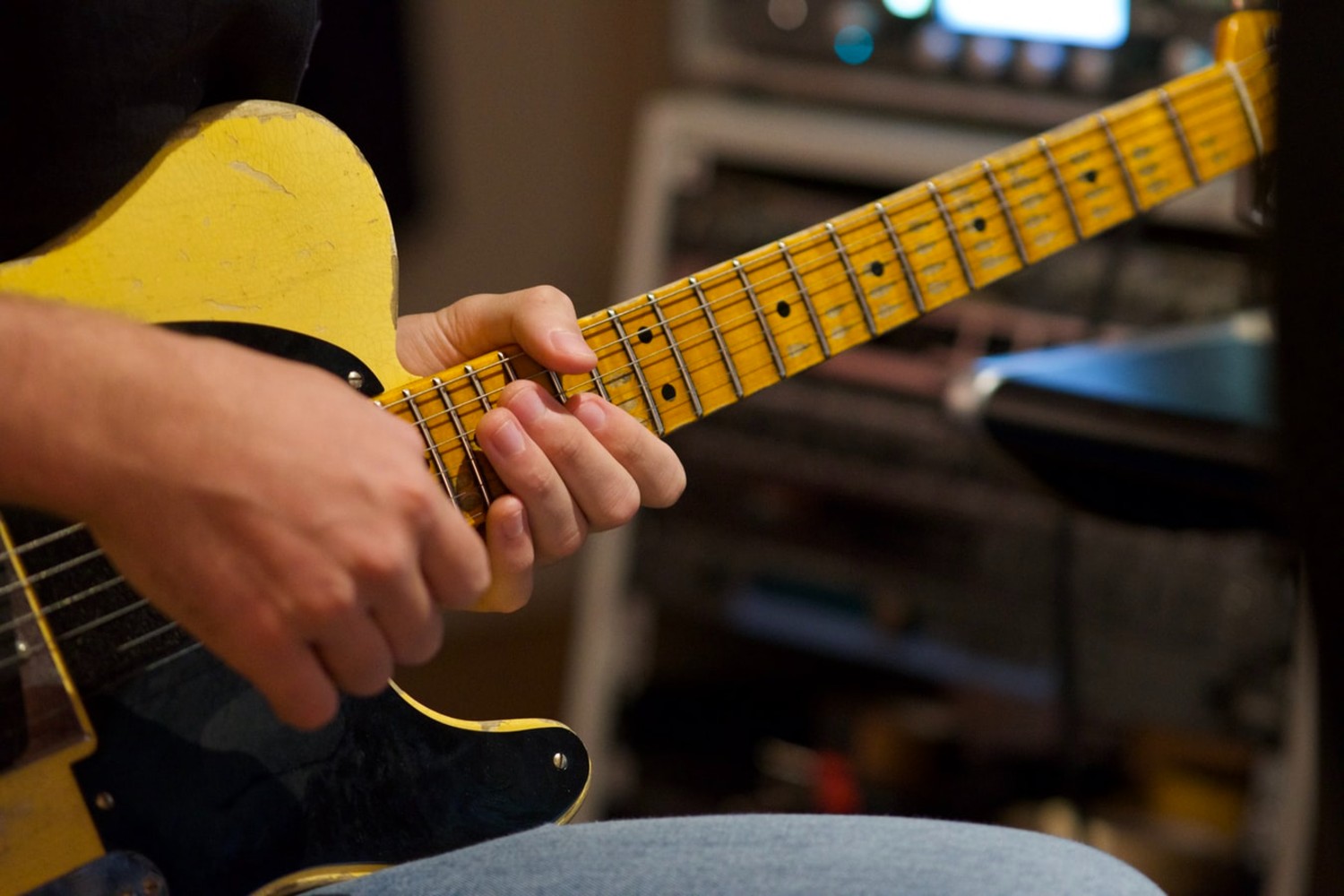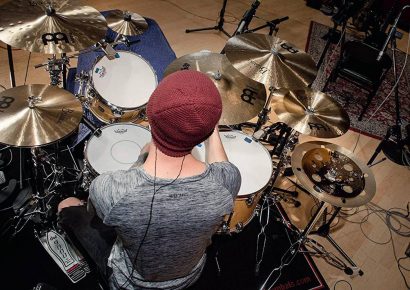Including those pesky triplets.
In this column, I’d like to focus on the rhythmic side of guitar playing. Of course, a combination of rhythm, harmony and melody is needed to be a competent guitarist but an understanding of rhythm and its applications in guitar can really help your feel and sound.
Players such as SRV, Prince, Joe Pass, Guthrie Govan and Tommy Emmanuel all display strong rhythmic sensibility in their playing. Whether it’s chordal ideas or lead lines they all have a serious handle on groove and utilising rhythm.
What you’ll learn:
- How to verbalise and play triplets.
- Combining straight and triplets and addressing picking issues.
- Subdividing rhythms for better feel.
Read up on all the latest interviews, features and columns here.

Figure A is a bluesy triplet type lick (think of this over an E blues with a shuffle rhythm). Triplets can be counted/verbalised/felt as ‘Pine-ap-ple’, ‘Ham-bur-ger’ or ‘Di-no-saur’ (amongst others!) and notice the first bar starts with two groups of quaver triplets (Beats 1 and 2). Then for beats 3 and 4 the first note of the triplet group is a rest.
Still count this however and mime the stroke with your right hand (without actually playing any notes), this helps to keep the triplet feel. All of these two note chords would typically be played with downstrokes (providing the tempo isn’t super fast) and the final run could be alternate picking, economy or a combination of picking and pull offs.

Figure B is a chordal/walking bass line idea. These types of sounds can be great to add the feeling of extra movement and the pseudo sound of a bass player into your normal comping/rhythm playing. The chord progression is a 1-6-2-5 in the key of C Major (so C-Am-Dm-G7) but intersperses the chordal hits with a walking bass line. Either thumb and fingers or pick (for the bass notes) and fingers in a hybrid picking style is the go here.
Combine the first C bass note with the chord on the 1+ and you get a CMaj7 voicing. Beats 3+ create an Am7 and so on. In between these is a chromatic note one semitone away from the target bass note/chord. This creates movement and some extra harmonic flavour.

How about a shreddy single note line? Figure C is based on A Dorian and moves between quavers and quaver triplets. This can create a few picking challenges as Alternate Picking works nicely in even groups (2s and 4s) but a triplet means you would end the group of 3 on a down and that might cause feel problems starting the next beat on an upstroke. So perhaps try alternate picking for the first 4 notes and then look at angling the pick to help with moving across strings to get the feel happening.
One last general comment – subdivide!
Even if you don’t physically count every beat out loud (and of course there are different scenarios depending on tempo) but subdividing with quavers/semi quavers is so important for feel and good timing.
I really don’t think this process of subdividing is given enough focus by guitar players. Perhaps this is due to the amount of self taught guitarists, and/or a general lack of notation reading skills. Conversely though, (most) drummers eat this stuff up as it’s integral to developing a solid understanding of time and feel.
In my experience brass and woodwind players too have great subdividing skills – being taught this early on in their development and then using this technique in large ensembles, sectional playing and lead lines. So don’t be afraid to get your 1+2+3+4+ and 1e+a2e+a3e+a4e+a happening to really solidify your feel.
For further reading, check out this guide on seven guitar techniques.

